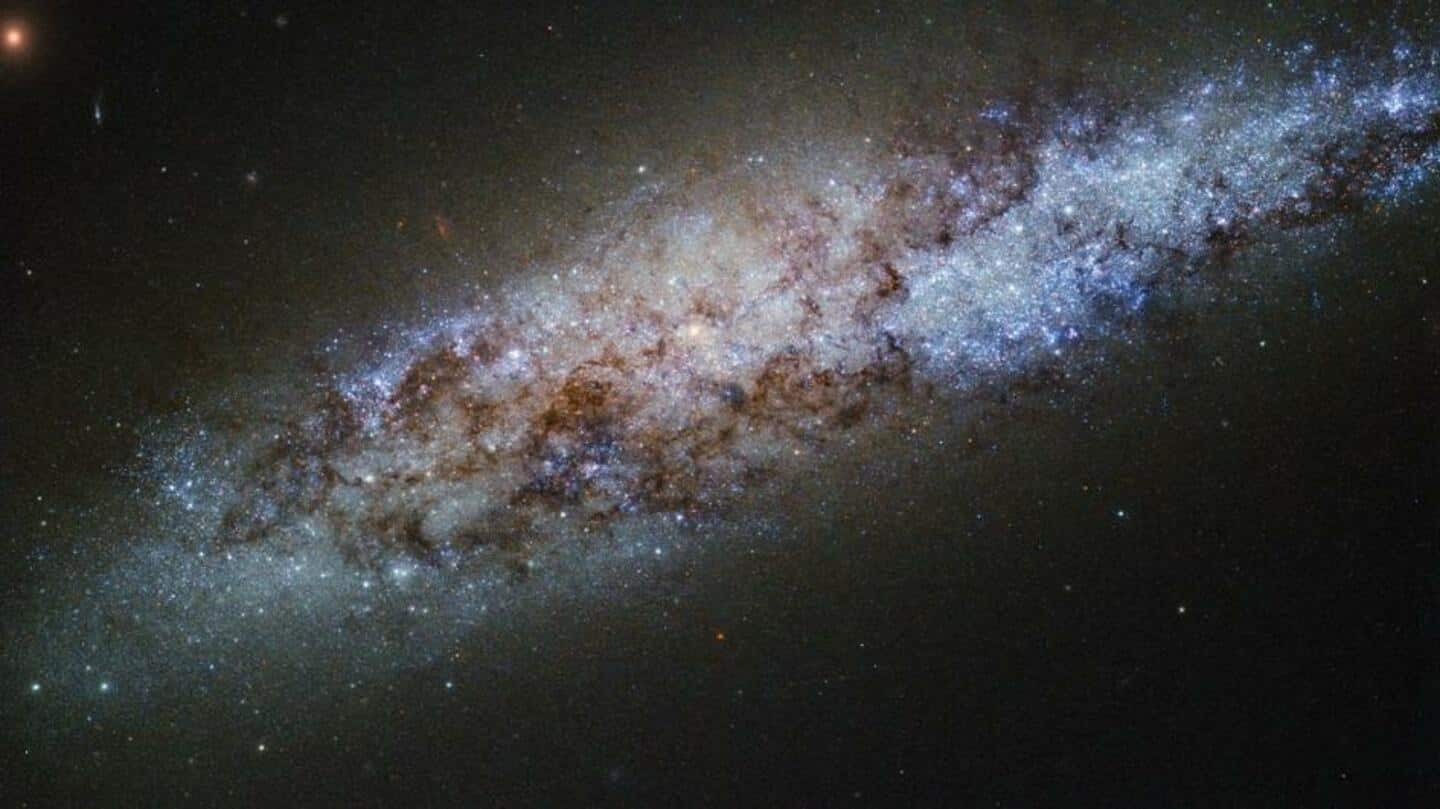
Indian telescope detects radio signal from the most distant galaxy
What's the story
With the help of India's Giant Metrewave Radio Telescope (GMRT), astronomers have captured a radio signal from the most distant galaxy. The signal, captured at a specific wavelength known as the "21-centimeter line," was emitted when the universe was 4.9 billion years old. Notably, this marks the first time that this type of radio signal has been detected from such a vast distance.
Context
Why does this story matter?
What's amazing is that this radio signal was detected when the universe, which is now estimated to be 13.8 billion years old, was only 4.9 billion years old. That is equivalent to looking back almost 8.8 billion years. This discovery could provide significant insights into the early universe and can help astronomers better understand the formation of early stars and early galaxies.
Detection
The radio signal was emitted by neutral hydrogen atoms
The signal was detected from the star-forming galaxy called SDSSJ0826+5630. Scientists measured the gaseous composition of the galaxy and observed that the atomic mass of the gas content of this particular galaxy is almost twice the mass of the stars visible to us. Also, the radio signal captured at the 21-centimeter wavelength was found to be emitted by neutral hydrogen atoms.
Official words
Atomic hydrogen acts as the basic fuel for star formation
Atomic hydrogen is what fuels star formation in a galaxy. It emits radio waves of 21-centimeter wavelength, which can be detected using low-frequency radio telescopes like GMRT. When hot ionized gas from the galaxy's surrounding medium falls onto the universe, the gas cools and forms atomic hydrogen. This atomic hydrogen then becomes molecular hydrogen and eventually leads to the formation of stars.
Details
The detection was possible due to the gravitational lensing phenomenon
The radio signal's detection was possible because of a phenomenon called gravitational lensing, said Nirupam Roy, from the Indian Institute of Science (IISc). In gravitational lensing, the light emitted by the source is bent due to the presence of another massive body, such as an early type elliptical galaxy, between the target galaxy and the observer, which results in the magnification of the signal.
Information
The radio signal was picked up from a record-breaking distance
"The astronomical distance over which such a signal has been picked up is the largest so far by a large margin. This is also the first confirmed detection of strong lensing of 21-centimeter emission from a galaxy", according to a statement by IISc.
Official words
Gravitational lensing can help obtain insights into distant galaxies
"A galaxy emits different kinds of radio signals. Until now, it's only been possible to capture this particular signal from a galaxy nearby, limiting our knowledge to those galaxies closer to Earth," said Arnab Chakraborty, a post-doctoral researcher at McGill University. Referring to the gravitational lensing phenomenon, he said that it will help "understand the composition of galaxies at much greater distances from Earth."